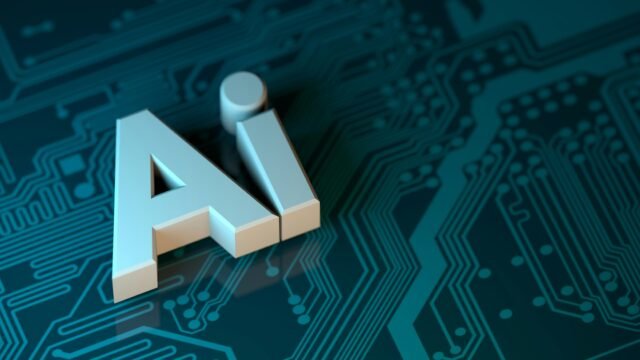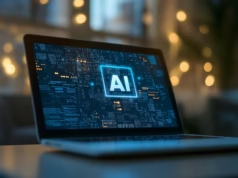As of October 2025, the convergence of artificial intelligence (AI) and automation is no longer a speculative horizon—it’s reshaping industries at an unprecedented pace. From enterprise workflows to physical robotics, these technologies are driving efficiency, innovation, and new economic models. Drawing from recent reports, expert analyses, and real-time discussions, here are the top tech trends to watch. These aren’t isolated developments; they interconnect to form an “automation fabric” that knits data, processes, and intelligence into seamless systems.
1. Agentic AI: From Assistants to Autonomous Actors
Agentic AI represents a leap from reactive tools to proactive systems that plan, execute, and adapt independently. These “AI agents” handle multi-step tasks—like optimizing supply chains or personalizing marketing campaigns—without constant human oversight. By 2025, 75% of enterprises are shifting from AI pilots to full operationalization, with agentic models integrating tools like APIs and databases for real-world actions. In discussions on X, experts highlight how this enables “vibe automating,” where users describe workflows in natural language, and AI builds them via platforms like n8n or Zapier. This trend is projected to boost productivity by automating 30-50% of knowledge work, but it demands robust governance to mitigate risks like unintended actions.
2. Hyperautomation: Orchestrating End-to-End Intelligence
Hyperautomation combines AI, robotic process automation (RPA), machine learning (ML), and natural language processing (NLP) to automate entire business processes, not just isolated tasks. Expect widespread adoption in 2025, with the global business process automation market hitting $16.46 billion—a 10.7% CAGR from 2024. UiPath’s trends report emphasizes AI orchestration platforms that unify siloed systems, enabling real-time decision-making in areas like finance and logistics. Forbes notes a shift toward “automation fabrics” that connect legacy tech stacks, reducing integration costs by up to 40%. In manufacturing, this manifests as predictive maintenance via AI + IoT, cutting downtime by 20-30%.
3. Physical AI and Embodied Robotics: AI Moves into the Real World
The “ChatGPT moment” for robotics is here, with Physical AI fusing digital intelligence and hardware for tasks like warehouse sorting or surgical precision. Humanoid robots from Tesla (Optimus) and Figure are deploying in factories, addressing a projected 90 million global labor shortage by 2030. Nvidia’s Isaac platform accelerates this by simulating real-world training, slashing development time. X threads buzz about “vibe automating” in robotics, where AI handles edge cases for mainstream adoption in delivery (e.g., Serve Robotics bots) and healthcare (Intuitive Surgical’s da Vinci). By 2040, this could generate $34 trillion in revenue, dwarfing e-commerce.
4. Multimodal and Generative AI: Smarter, More Intuitive Systems
AI and Automation: Multimodal AI processes text, images, voice, and video simultaneously, powering applications like AR-guided manufacturing or predictive customer service. Generative AI evolves beyond content creation to domain-specific models for marketing (auto-generating personalized campaigns) and supply chains (simulating disruptions). Gartner predicts 90% of enterprise apps will embed AI by year-end, with 70% of new tech built on low/no-code platforms for faster deployment. On X, trends include voice-integrated assistants mimicking sci-fi interfaces, with continuous learning to refine outputs from user feedback.
5. Sustainable and Green Automation: Efficiency Meets Ethics
Automation isn’t just about speed—it’s about sustainability. Green tech optimizes energy use in data centers and factories, with AI reducing waste by 15-20% through real-time resource allocation. Trends include edge computing to minimize cloud dependency and blockchain-integrated AI for transparent supply chains. Ethical AI governance is non-negotiable, with frameworks ensuring fairness and auditability; 2025 sees more AI ethics officers in C-suites. X conversations stress reskilling workers for AI-augmented roles, turning potential job displacement into productivity gains.
6. Domain-Specific AI and Data-Driven Insights
Tailored AI models for industries—like finance’s risk assessment or retail’s inventory prediction—are exploding. Streaming data analytics grows fivefold, enabling proactive optimization via process mining tools. Amazon’s logistics exemplify this, with AI preempting demand to cut costs. By 2025, AI + 5G/IoT/blockchain hybrids will dominate, from autonomous vehicles to secure data sharing.
| Trend | Key Impact | Example Applications | Projected Market Growth |
|---|---|---|---|
| Agentic AI | Autonomous workflows | Supply chain planning, customer personalization | 75% enterprise adoption by EOY |
| Hyperautomation | End-to-end process transformation | Finance reporting, manufacturing maintenance | $16.46B global BPA market |
| Physical AI | Real-world task execution | Humanoid robots, delivery bots | $34T revenue potential by 2040 |
| Multimodal/GenAI | Intuitive, creative tools | AR training, content generation | 90% of apps AI-embedded |
| Green Automation | Resource optimization | Energy-efficient factories | 15-20% waste reduction |
| Domain-Specific AI | Industry-tailored intelligence | Predictive analytics in retail/banking | 5x streaming data surge |
The Road Ahead: Opportunities and Imperatives
These trends signal a post-labor economy where AI and automation amplify human potential, not replace it—boosting GDP by trillions while creating roles in oversight and innovation. However, success hinges on data quality, ethical deployment, and upskilling; poor foundations could amplify biases or inefficiencies. Leaders should prioritize integrated platforms and pilot agentic systems now. As one X post aptly puts it: “AI isn’t the future—it’s the foundation.” The revolution is underway—position your strategy to thrive in it.








